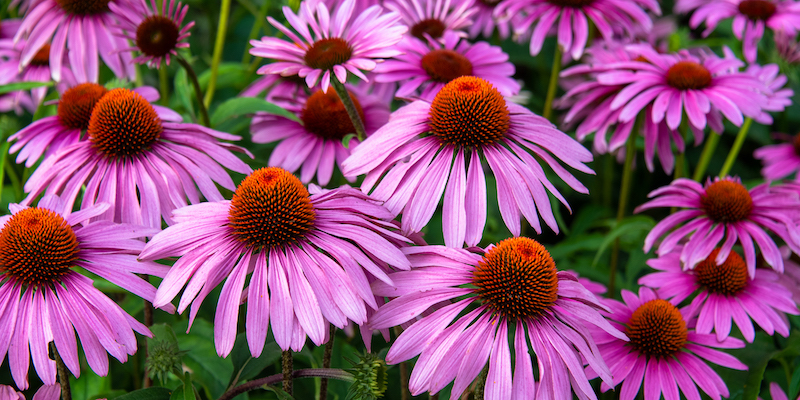by Melissa Chichester
For example, ginkgo biloba is one of the oldest tree species in the world and is referred to as a “living fossil.”
Plants contain many different active nutrients and compounds that we can use for our well-being. These benefits come from many different parts of these plants – from leaves and roots to seeds and flowers.
Here are 5 common plant parts that are often used for human health.
Bark is the protective outer layer of a tree trunk that contains concentrated amounts of certain nutrients, depending on the plant.
Examples of beneficial bark include willow bark and Pycnogenol®.
Pycnogenol® is the trade name for pine bark extract derived from the bark of the French maritime pine trees. It has been clinically studied for more than a decade and may support perimenopausal health, heart health, and joint health.*
Edible flowers add color and unique flavor to recipes – and many flowers are used for their health benefits.
Two that might come to mind right away are echinacea and the elder plant.
The flowers and berries of the elder plant have a long history of traditional use. Elderflower has antioxidant properties and Elderberries have been traditionally used to support immune health.*
Echinacea is a perennial that produces purple, daisy-like flowers that are also referred to as purple coneflowers. This traditional herb has become one of the world’s leading herbs for immune support.*^
Botanical Sleep is an herbal supplement blend that uses the flowers for certain ingredients. It blends valerian root extract, passionflower extract, and hops extract, three naturally sourced herbs that help to promote sound sleep when experiencing occasional sleeplessness.*

The fleshy or woody roots of many plants are used for their beneficial nutrients.
Roots used for wellness include:
The leaves of many kinds of plants, including flowers, trees, and shrubs can be used for wellness. Leaves are used alone or sometimes mixed with other parts of the plant.
Moringa is a superfood derived from Moringa Oleifera leaves. It is a source of antioxidants and naturally occurring phytonutrients.* Moringa is known as the nutrition of the tropics.
Other plants used for their leaves include mulberry, olive leaf, and holy basil.
Gingko leaf also has benefits.
Ginkgo provides the supplemental nutrition needed to support healthy brain function, mental alertness, and mental focus, especially for those who experience occasional mild focus problems associated with aging.*
Beyond that, ginkgo also helps promote healthy circulation and blood flow.* Not only does ginkgo help maintain circulation to the extremities, but it also maintains circulatory perfusion in cerebral tissue.*
Puritan’s Pride® Lion’s Mane and Ginkgo is one source you can turn to for brain nutrition.* It includes ginkgo leaf and lion’s mane mushroom.*
When seeds of a plant are used for wellness, they may be inside of the fruit or used on their own. Extracts from seeds are also used.
Seeds used for wellness include:
The plant world is abundant in what it provides for human use. However, not every plant part is useful. For example, if a plant has roots used for wellness, that doesn’t mean the rest of the plant is beneficial. And like any supplement, always ask your personal physician if it will work for you.